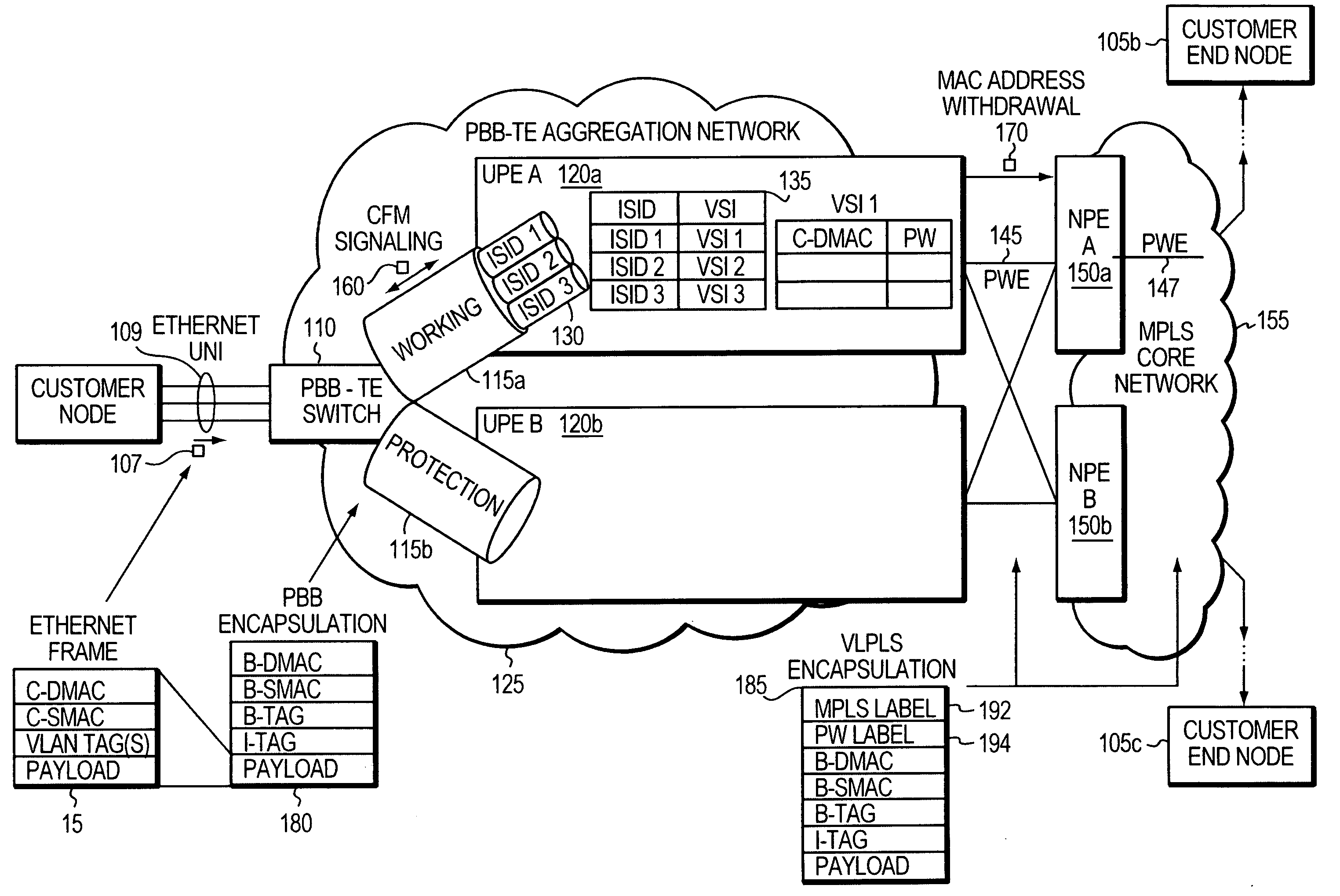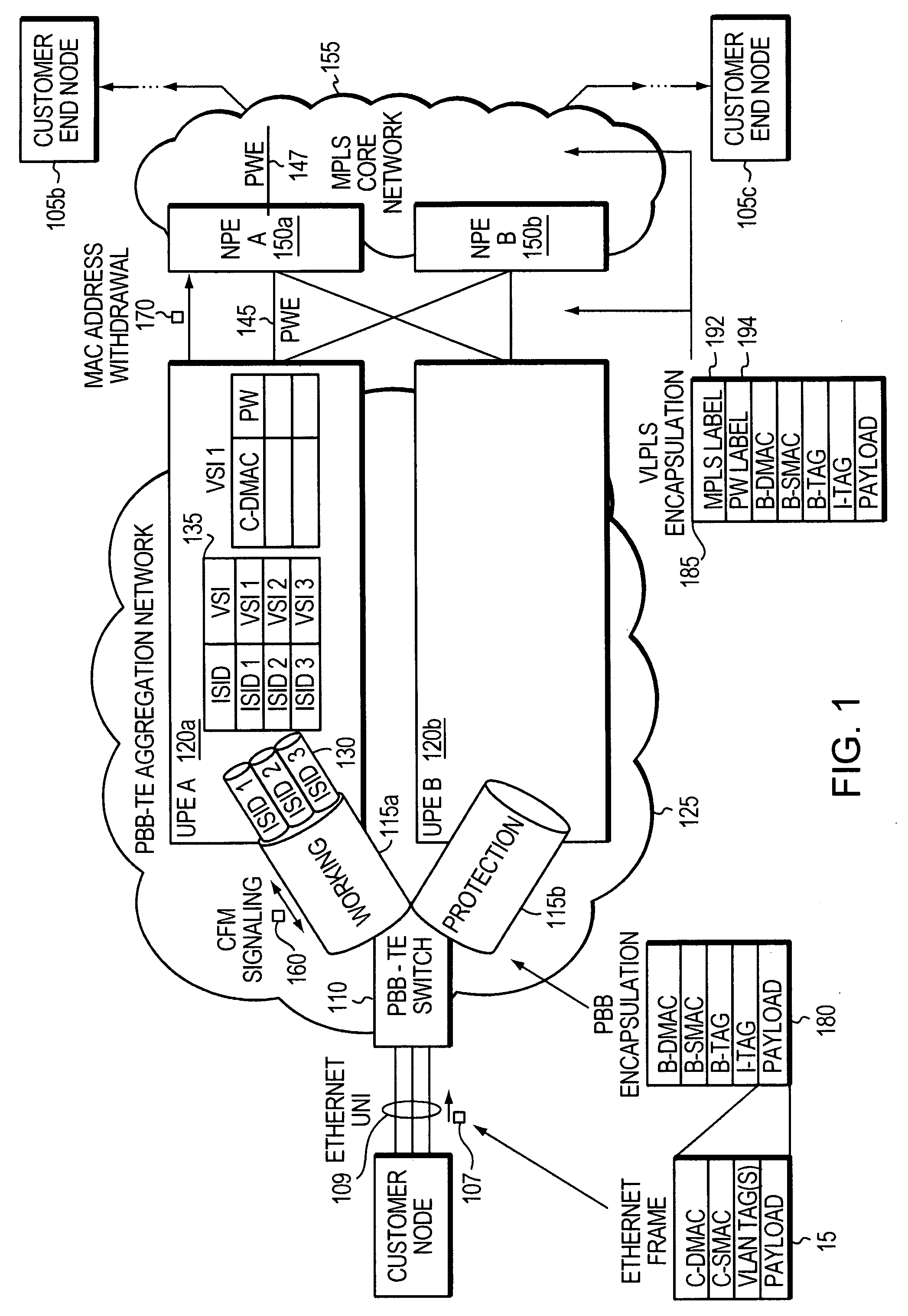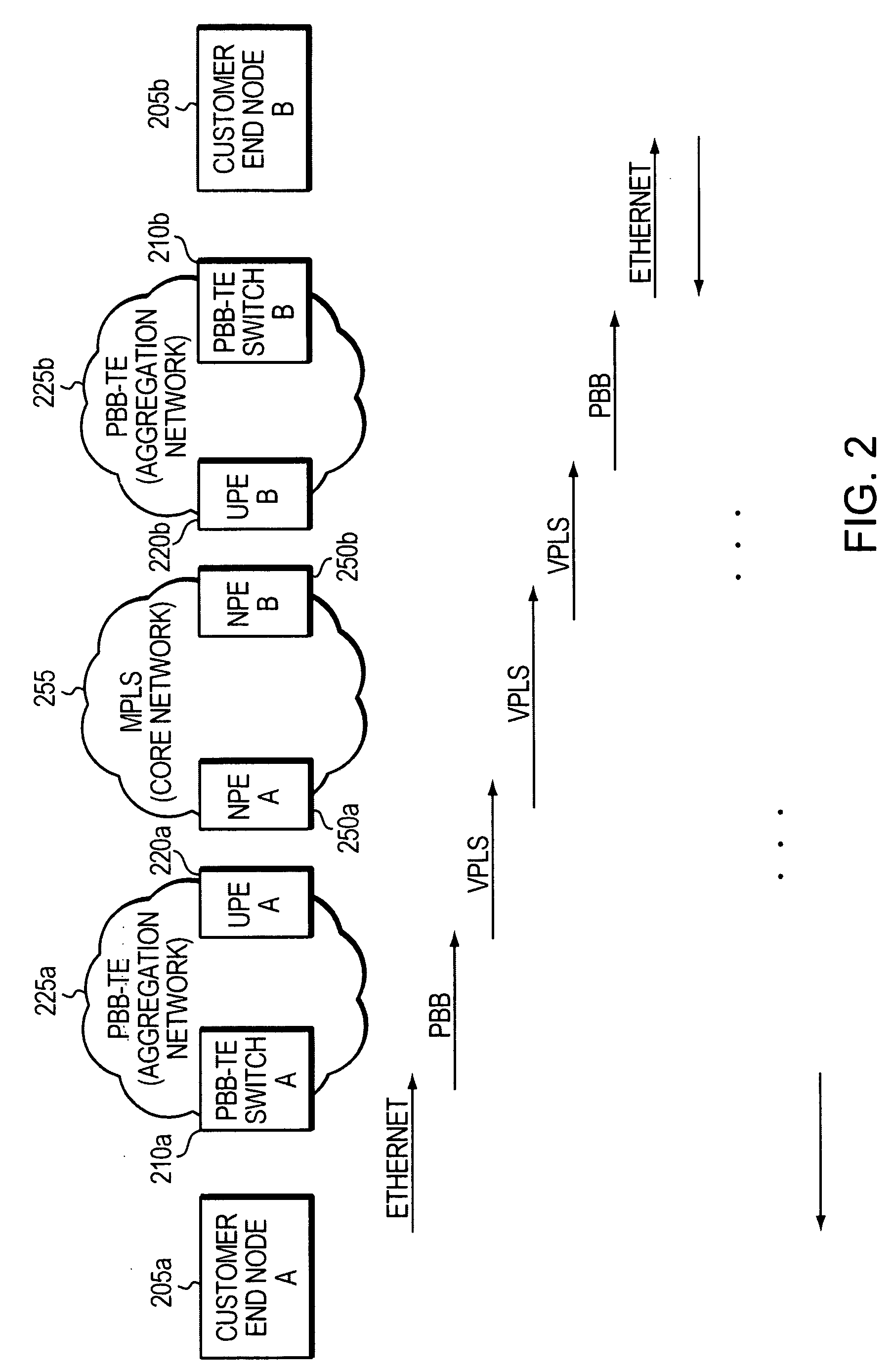Method and apparatus for supporting network communications using point-to-point and point-to-multipoint protocols
a network communication and multi-point technology, applied in the field of method and apparatus for supporting network communications using point-to-point and point-to-multi-point protocols, can solve the problems of simple, yet inefficient, network communication protocol of broadcasting
- Summary
- Abstract
- Description
- Claims
- Application Information
AI Technical Summary
Problems solved by technology
Method used
Image
Examples
Embodiment Construction
[0016]A description of example embodiments of the invention follows.
[0017]Through the establishment of network traffic tunnels, which are inherently point-to-point in nature, Provider Backbone Bridge Traffic Engineering (PBB-TE) loses an ability to transmit point-to-multipoint and broadcast data. PBB-TE also does not inherently support unknown unicast traffic. In end-to-end PBB-TE tunnels, fine-grained traffic engineering on transit nodes is not possible since Instance Service Identifier (ISID) values are only visible (and thus meaningful) at the ends of tunnels.
[0018]Using conventional Provider Backbone Bridge (PBB) technology offers multicasting and broadcasting capabilities at the cost of losing dual homing capability. Dual homing refers to a network topology in which a network element is connected to a network by means of two independent access points (attachment points) for redundancy and reliability. Also, traditional PBB does not offer granularity control of user traffic at c...
PUM
 Login to View More
Login to View More Abstract
Description
Claims
Application Information
 Login to View More
Login to View More - R&D
- Intellectual Property
- Life Sciences
- Materials
- Tech Scout
- Unparalleled Data Quality
- Higher Quality Content
- 60% Fewer Hallucinations
Browse by: Latest US Patents, China's latest patents, Technical Efficacy Thesaurus, Application Domain, Technology Topic, Popular Technical Reports.
© 2025 PatSnap. All rights reserved.Legal|Privacy policy|Modern Slavery Act Transparency Statement|Sitemap|About US| Contact US: help@patsnap.com



